Inside Tokyo Joypolis
Take an in-depth tour of the famous Sega-based indoor amusement park

Around this time in 2019, I was nestled into a Qantas jet bound for Tokyo. It was my first ever trip to Japan, and although there were many sights I was eager to see, there was no question that Japan being a gaming Mecca was a big part of the allure. So far, I’ve written two gaming-related pieces from my journey. One was all about how to visit Nintendo in Kyoto. The other was all about my visit to Hiroshima. But as the year has progressed — and there have been so many other things to write about — I’ve neglected to finish the story.

One of the places I was most keen to check out in Japan was an indoor amusement park known as Tokyo Joypolis (I’ve always known it as “Sega Joypolis”, although this was apparently never its official name). In a country full of incredible gaming attractions, you might wonder why Joypolis. Well, there are two reasons, really. First, as a kid, I’d always wanted to visit Sega World in Sydney — which was, I gather, a broadly similar type of amusement park. Unfortunately, the complex closed in 2000. In addition, I’d heard about the Joypolis theme parks as a kid. I am pretty sure that I’d seen something on TV about them as well. I remember thinking I’d never be able to visit a place like that — it seemed like heaven to me. So, when I finally went to Japan this year, I had to check it out.
What is Tokyo Joypolis?
There are now only a few Joypolis amusement parks left in the world. Two exist in Japan itself (Tokyo Joypolis is the original, flagship location and there’s a second VR-specific centre in Shibuya, which opened in 2018). There are also another two centres in China (one in Qingdao and another in Shanghai). If you want to get the briefest overview possible of what to expect at Tokyo Joypolis, I invite you to check out this mega-cheesy video:
Source: YouTube.
I mean, yes, there are rides. There are various rides! That’s certainly true — I’ll talk about those in greater depth in a moment.
At a high level though, Tokyo Joypolis is an indoor amusement park; in practice, this means there’s a wide variety of attractions available. The truly great thing about this is that there’s really something for everyone — this is important if you intend to visit with family members or friends with various interests and abilities. It can be difficult to find activities that everyone can enjoy, but I think Tokyo Joypolis provides plenty of options.
There are three floors in the complex, featuring a wide range of experiences. Tokyo Joypolis tends to divide these experiences into two categories: Attraction and Game. The attractions generally come in the form of rides (like Tokyo Halfpipe, for example), although some of them are far more abstract in nature and involve some combination of sensory experiences and cooperative puzzle solving. For instance, Fortune Forest is something of an audiovisual experience designed to be experienced, ideally, with your partner. The Joypolis Explorer is a kind of AR game, where you take a small device around the facility with you and use it to find runes hidden around the building. These attractions are great to play with a group of people, especially if you have children with you. They’re also a nice way to break up your day or to take some time out from the rides.
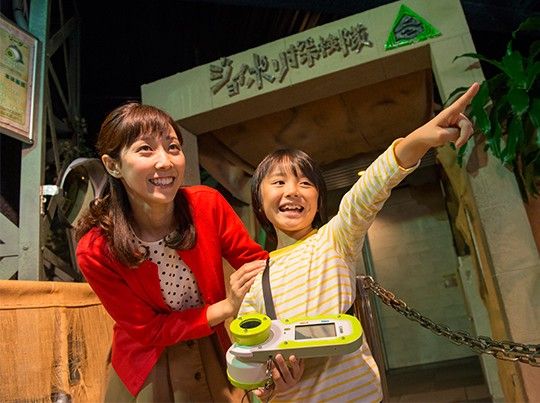
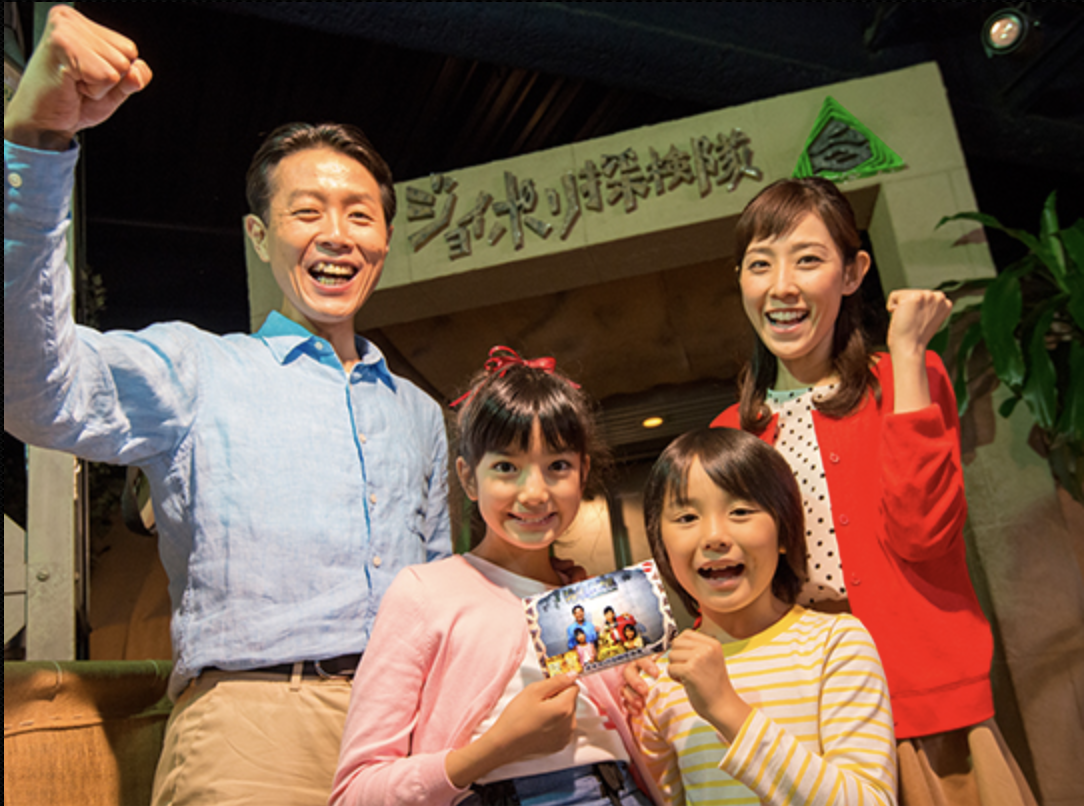
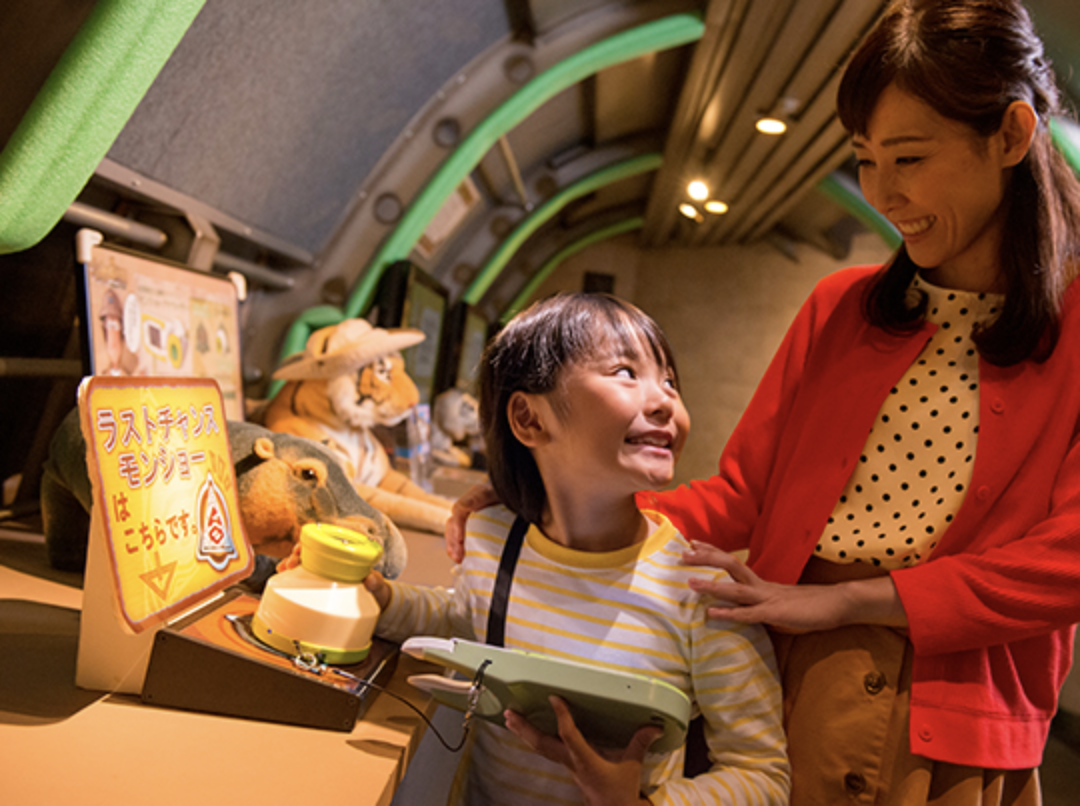
Joypolis Explorer. Source: Tokyo Joypolis.
Games are a combination of traditional arcade games and carnival-style experiences. Sonic Carnival is probably the biggest of these, located on the second floor. It’s pretty much what you’d expect — a mini-indoor carnival that takes up most of the floor.
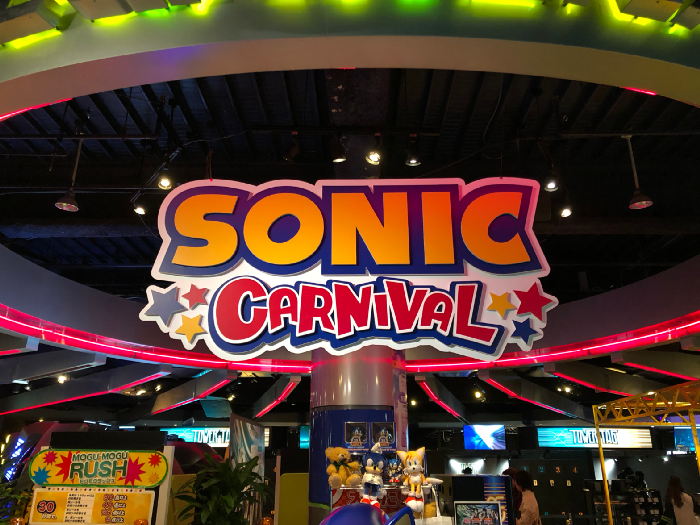
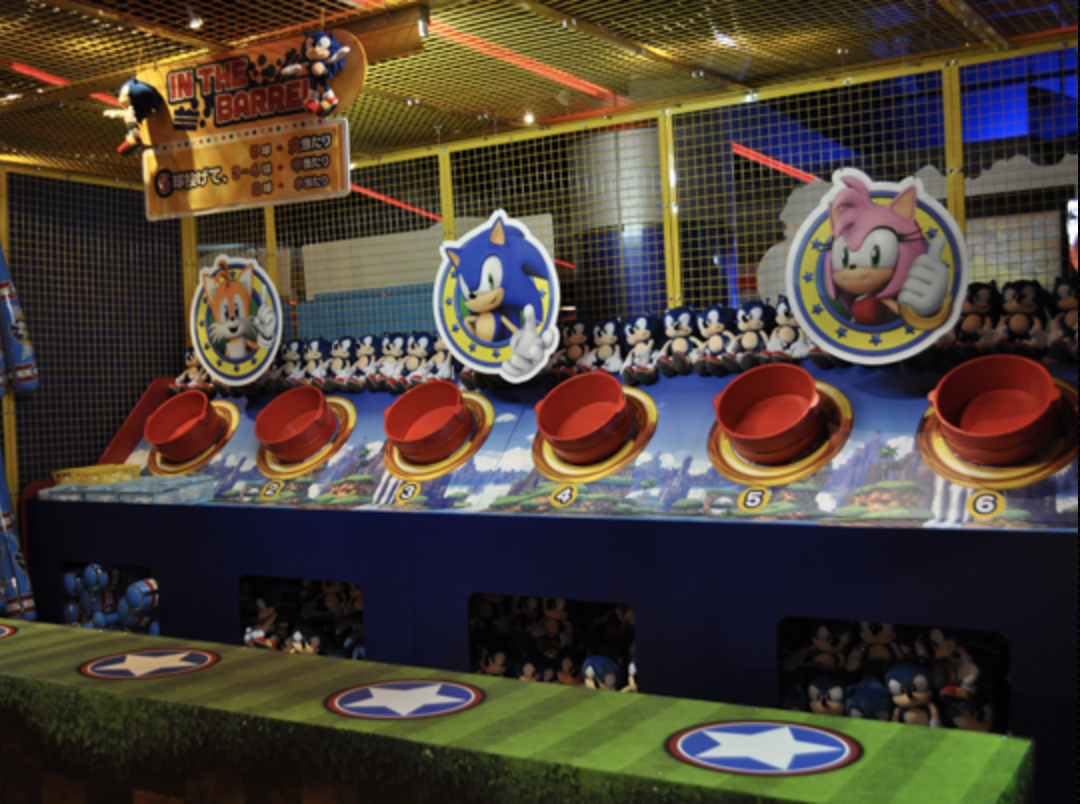
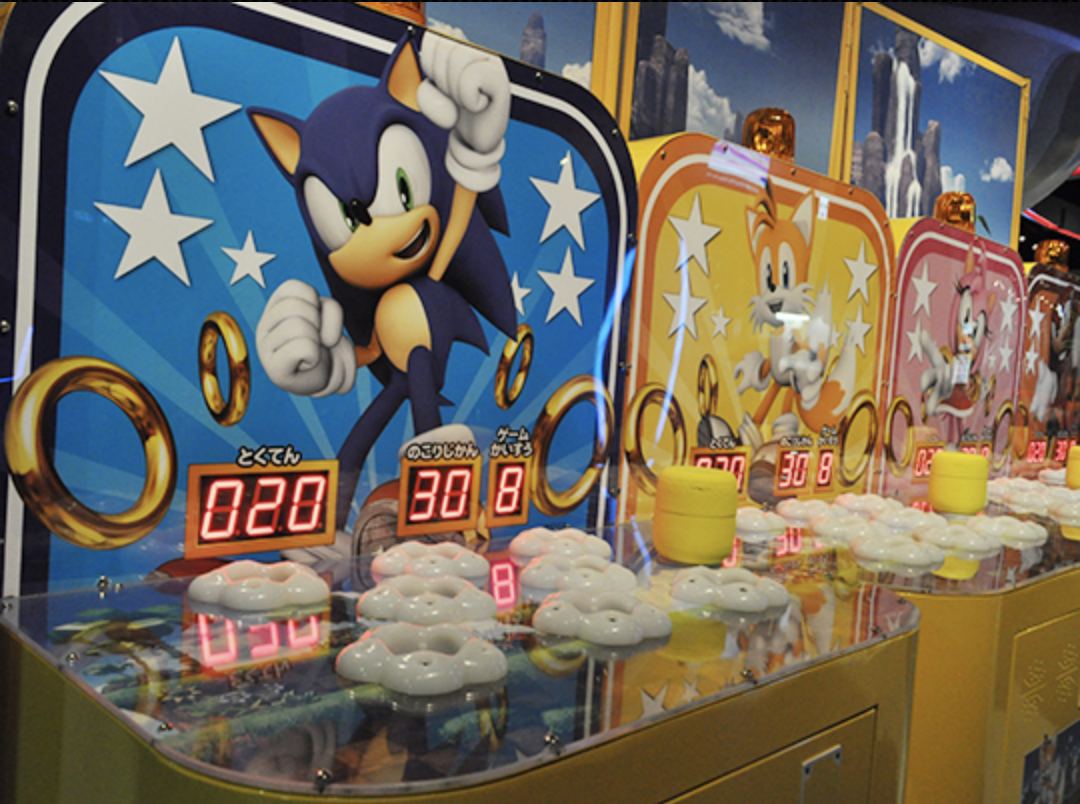
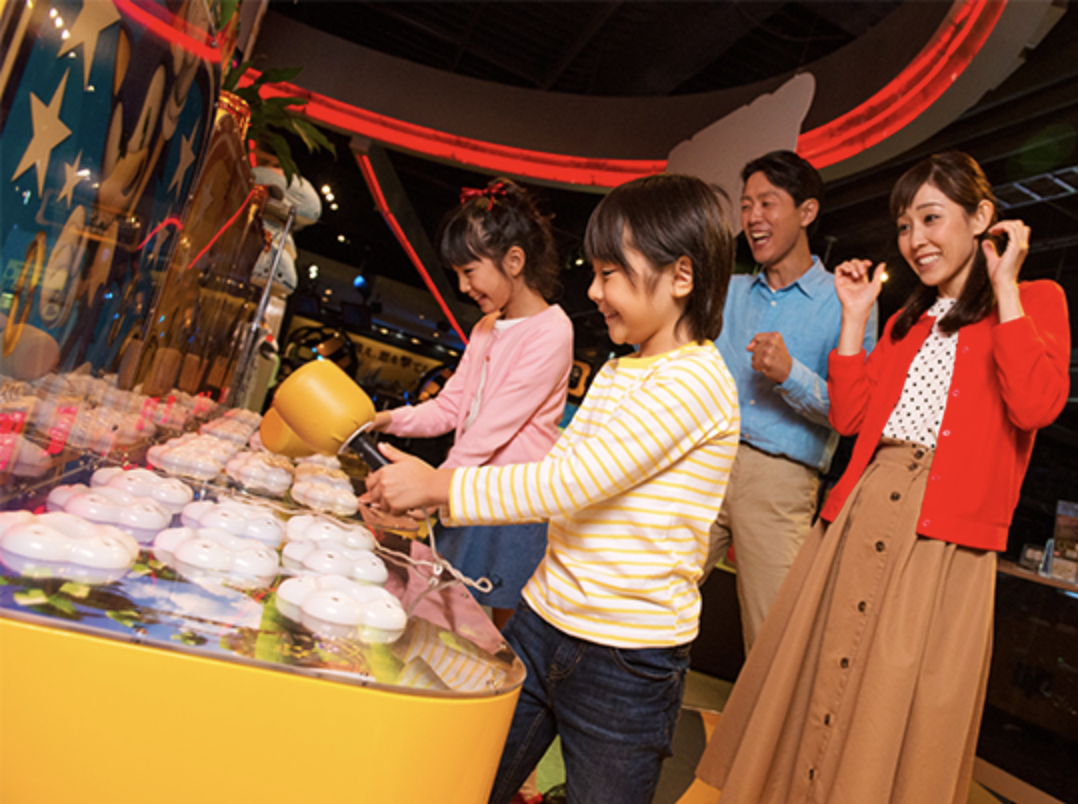
Source: Author (top left), Tokyo Joypolis.
Again, this is a great place for families and it’s possible to spend much of your day here if it’s your thing. I must admit, I was mostly keen on checking out the rides, so I didn’t spend very long in this area.
There’s also a “game” called Prize Corner, which is literally just an entire section full of claw-game machines. Whenever I see these machines, I often wonder about the sadist who invented them (and in which circle of Hell they are currently residing) — needless to say, I view them simply as a way of extracting money from folks without providing any real value (they’re just another form of gambling, I’d argue). That said, these things are wildly popular in Japan and so it’s no surprise to find them here. If they’re your thing, then you’ll be in heaven — and if you’re ultra-lucky, you might win an incredibly cool Sonic plushie.
Like any good amusement park, Tokyo Joypolis also features numerous eateries and a rather interesting little gift shop.
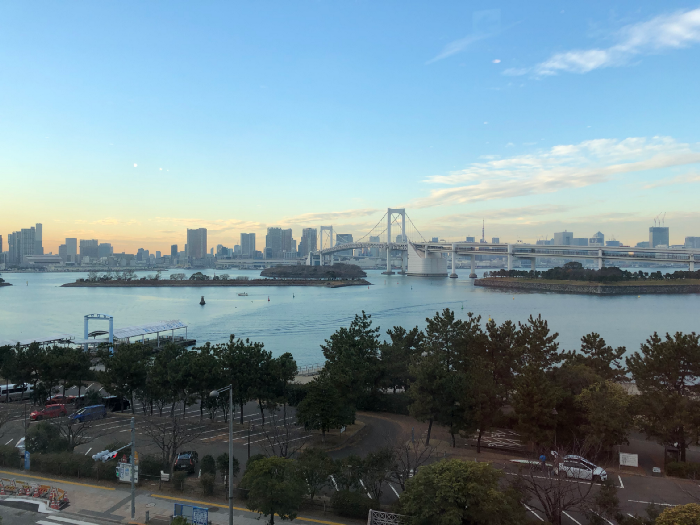
I had lunch at the Frame Cafe, which is the largest eatery at the centre. It’s up on the third floor, and it’s surrounded by glass — I loved this spot, as it provides an incredible view of Tokyo Bay and the famous Rainbow Bridge. I wouldn’t say the food is particularly amazing (it’s very much standard amusement park fare), but it’s definitely serviceable and it’ll get you through the day.
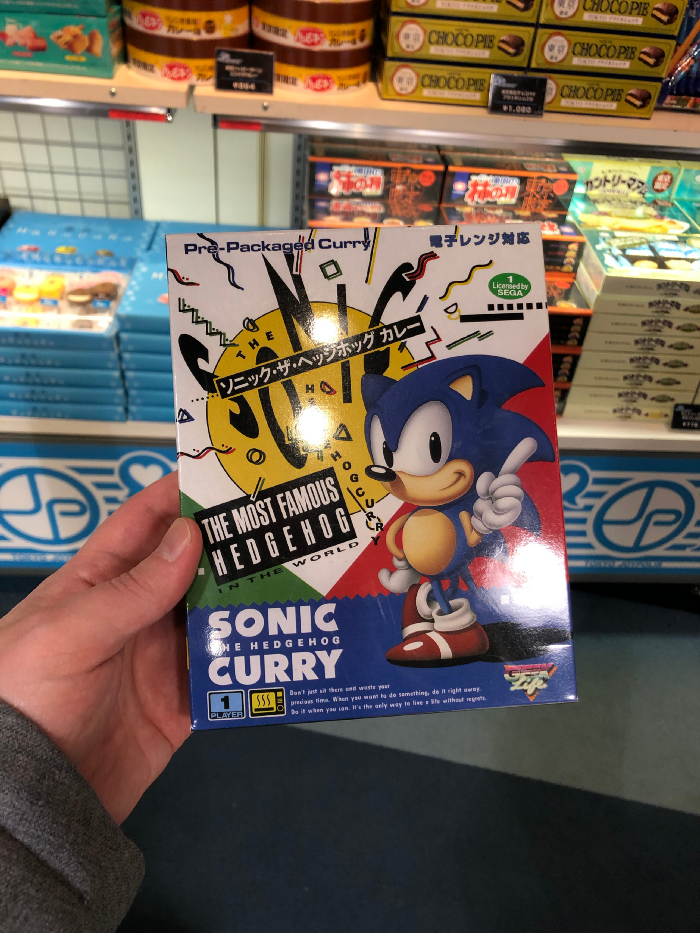
I also spent some time at the JP STORE, which is right near the entrance/exit. It’s surrounded by bins of plushies, and you’ll find plenty of unique items here (including a fancy Sonic-shaped luggage tag that I couldn’t resist). There are a ton of awesome stationery items too, as well as all the usual stuff you’d expect (posters, cups, key rings, etc…) There’s also, oddly enough, an entire section dedicated to food (including the Sonic the Hedgehog Curry you can see me holding in the photo here). Tempted as I was, I decided not to haul a bag of Sonic curry back with me to Australia. I was mostly just impressed to find that there are almost no objects in Japan that don’t carry some sort of funky branding involving a mascot of some kind. The cool thing about all this is that you’ll definitely be able to find some rare souvenirs here that are exclusive to Tokyo Joypolis (and let’s face it, for gamers in particular, that’s a pretty compelling reason to visit all on its own).
Attraction impressions
I’m still not sure about this subtitle. I was going to say “hands on”, but it’s really more a case of “body on”. But that just sounds creepy. Anyway, moving on; I had almost a full day at Tokyo Joypolis, although I certainly didn’t try every single game or attraction. In some cases I just wasn’t interested in what was on offer, and in other cases I simply ran out of time. At any rate, I thought I’d talk in a little more depth about the attractions that really interested me — hopefully I can give you a sense of what the experience was like, and whether or not it was worthwhile.
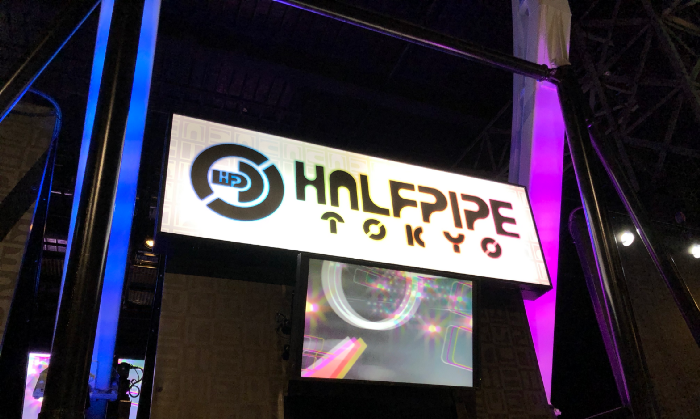
The first attraction I checked out was Halfpipe Tokyo. It’s right near the entrance, after you pass the storage lockers (which I highly recommend using, by the way; you won’t want to have any bags or coats with you as you’re exploring the centre). You can’t miss this one, both because it’s massive and because you can hear it right as you pass the lockers.
I have to admit, Halfpipe Tokyo was probably my second-favourite attraction at Tokyo Joypolis. Here’s a really crappy video I took to give you some sense of what it’s like:
Source: Author.
The premise is pretty simple. Each of the vertical columns has two “skateboards” attached to the bottom, enabling two people to essentially play on a single team. There are four teams in total. The goal is to gain the most points by doing tricks (which, as far as I can tell, just involves jumping and spinning your board in the air at the right time). What’s cool about this is that you use the lights on the halfpipe itself — as well as the big screens at the top — to judge when you need to do a jump. It’s pretty simple, but the fact that the ride is interactive in this way — and that both teammates need to jump at the same time — is very cool. It feels great, and it’s awesome that the ride isn’t entirely passive in nature.
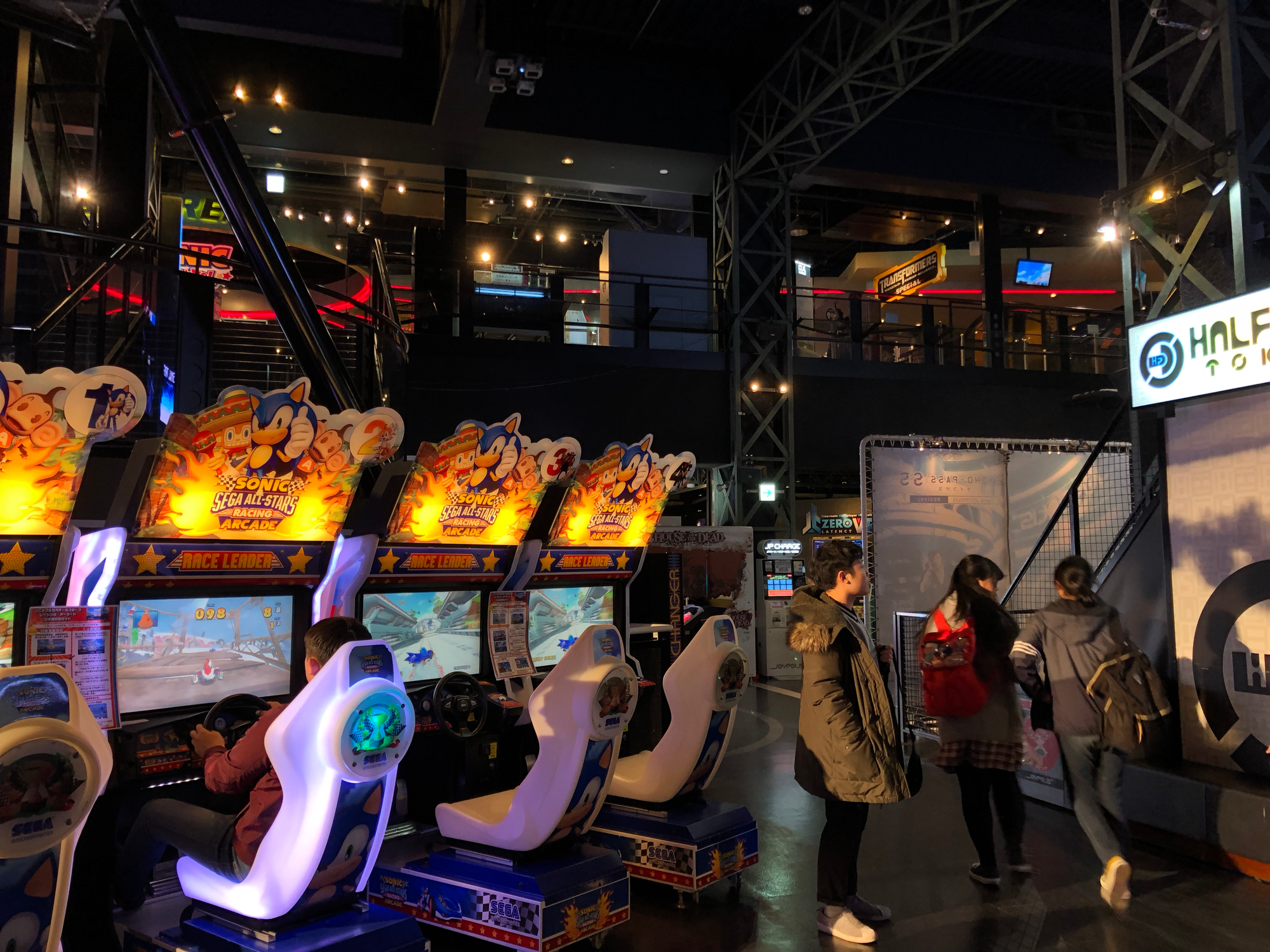
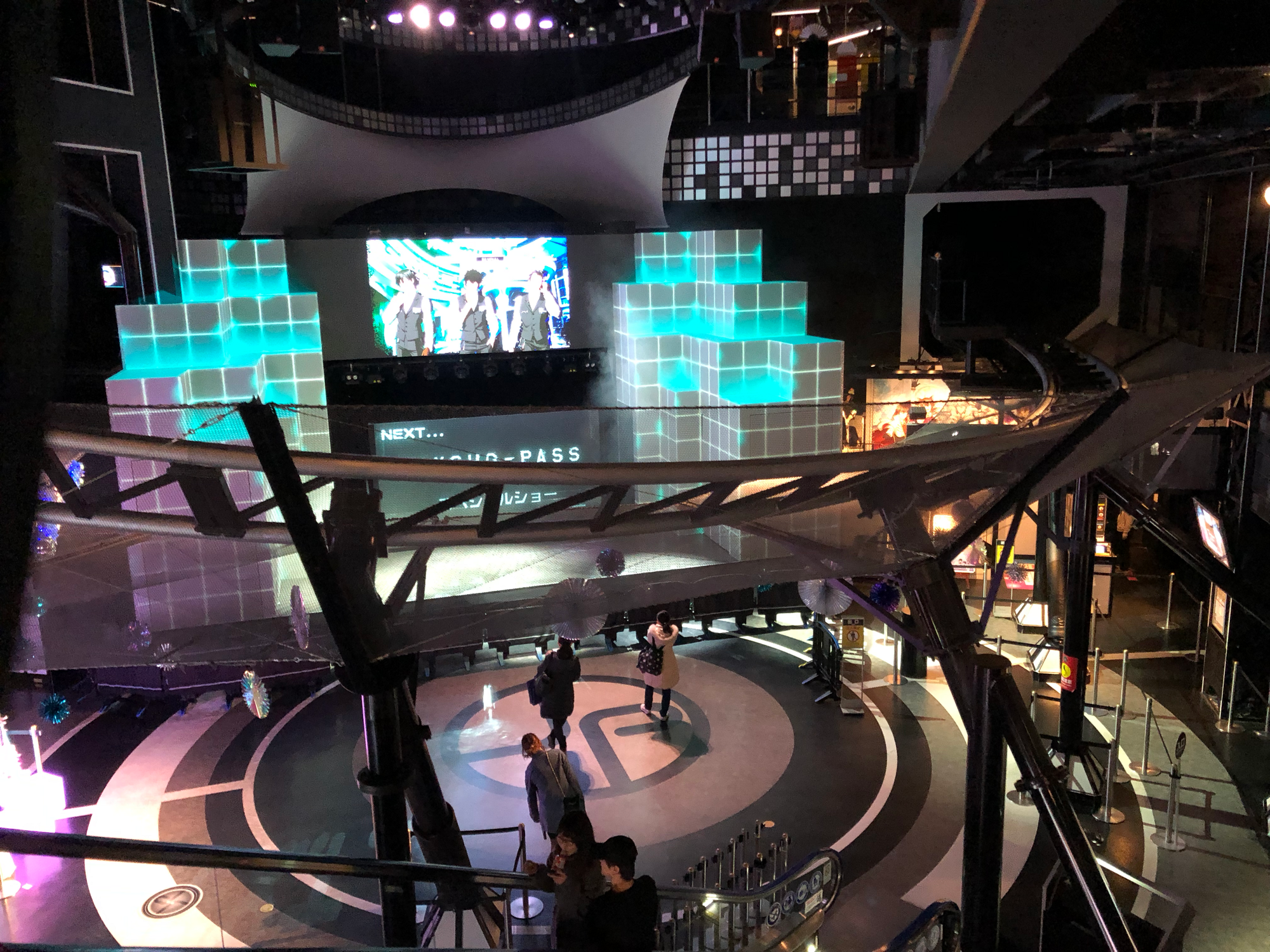
Inside Tokyo Joypolis. Source: Author.
Another attraction that I was pretty blown away by was Transformers Human-Alliance Special. It’s located on the second floor.
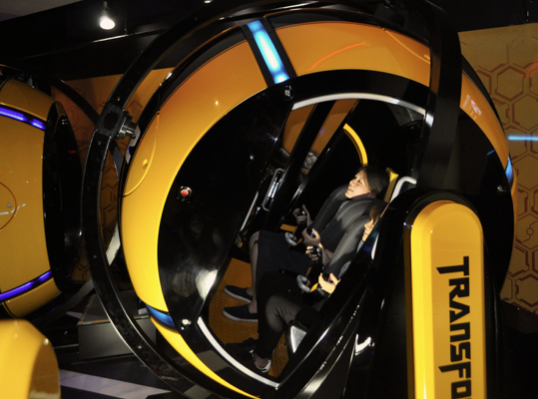
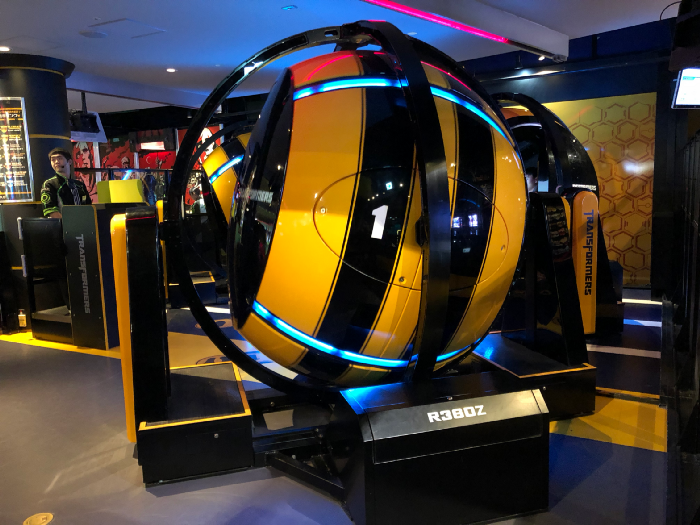
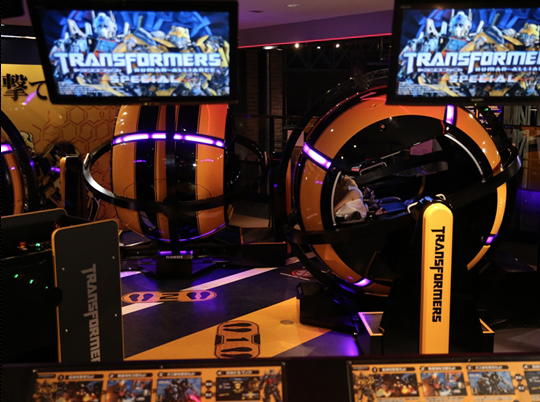
Transformers Human-Alliance Special. Source: Author.
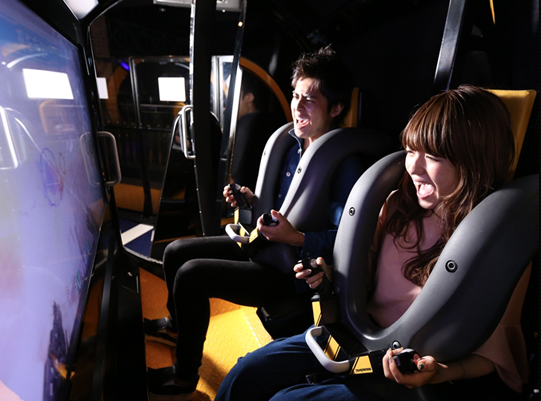
This was one of the more surprising attractions because it’s pretty close to a pure video game but the bespoke two-player capsule completely revolutionises the experience. The actual game itself is incredibly simple — you’re basically pairing up to fight Decepticons in a bustling city. On the surface, this feels like a cooperative on-rails arcade shooter (although each player has two weapons which can be independently aimed via each hand). Like most on-rails shooters, you don’t actually get to walk around freely; the game moves you around from set piece to set piece. What’s amazing, though, is that the spherical capsule can spin in any direction — including upside down. The way this integrates with the game experience is absolutely incredible; I wanted to keep going back and playing again and again (and perhaps I would if the safety briefing didn’t feel like I was taking a bachelor’s degree — seriously, the wait time is pretty significant).
Source: Author.
It was all worth it though. One sequence in particular stands out in my mind; you’re both on the top of a tall skyscraper fighting a Decepticon. You edge backwards toward the precipice, and eventually, the Decepticon shoves you hard off the edge of the building. You actually feel the shove because the entire capsule shakes violently. As you call away from the building, the capsule begins to spin a full 360 degrees. It’s absolutely crazy, and I’ve never played anything like it before. If you visit Tokyo Joypolis and you don’t mind being flung around upside down in a little capsule, then you must give this one a go.
I would also highly recommend Storm G, which you can also find on the second floor.
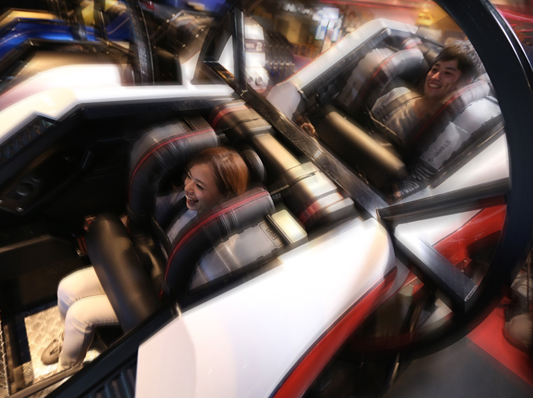
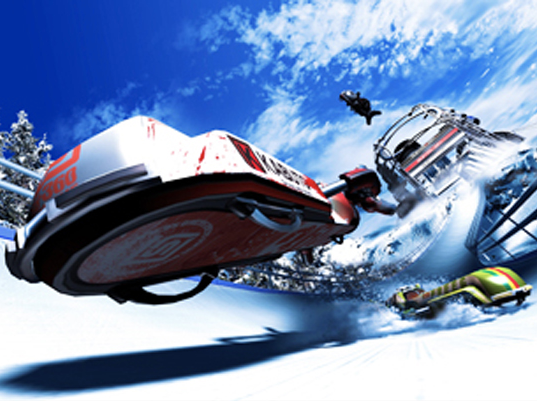
Storm G. Source: Tokyo Joypolis.
This is essentially a futuristic bobsledding game. Like many of the attractions at Tokyo Joypolis, it requires two players on each team (with a maximum of four teams competing at once). And again, the concept is pretty simple — both players have controllers on each side of the cockpit that enable them to coordinate movements to round corners smoothly. As you successfully coordinate your movements, you’ll see a “spin” button appear on screen. If both players press the button on their controllers simultaneously, the entire craft will rise up into the air and spin rapidly — you’ll also see the screen spinning at the same time. These spin moves essentially act as an extra speed boost to give you the edge in a race. It’s a simple game, but I definitely enjoyed it. I have no idea if it’s a Joypolis exclusive, but I’ve definitely never seen anything like it in regular arcades. Just remember, the spinning action is pretty fast — if you think it’ll make you feel sick, you might want to avoid it.
One of the coolest attractions that I kept noticing during my visit (and which I couldn’t wait to try) was the Gekion Live Coaster. You’ll see it snaking its way around the ceiling of Tokyo Joypolis as you explore the centre. Admittedly, it took me a little time to find the entrance for it — because it’s on the ceiling I assumed I had to be on the third floor to access it. It turns you actually enter the coaster via the first floor.
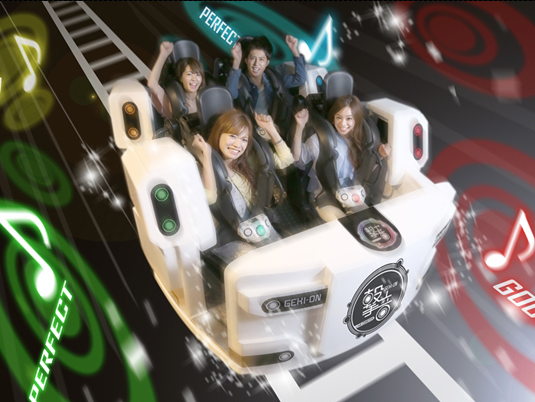
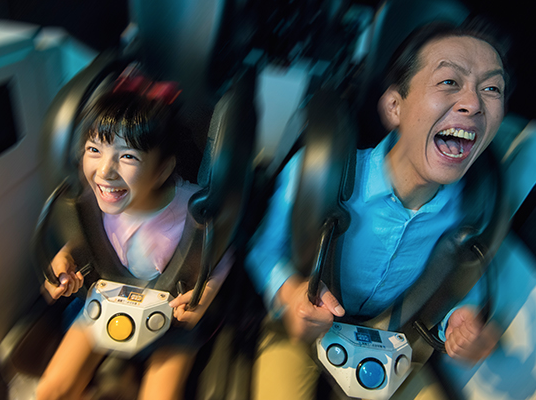
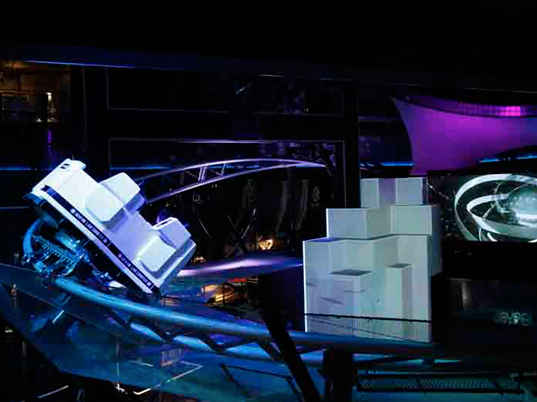
Gekion Live Coaster. Source: Author.
The coaster itself consists of only one car, which holds four people. I can’t remember how long the ride itself goes for — from memory it’s all over pretty quickly. So hopefully this means you won’t be waiting long to jump onboard. In any case, I have to say, this is one of the weirdest rollercoasters I’ve ever been on in my life. This is in part because it’s both a rollercoaster and a music rhythm game! Because of course! Each restraint on the vehicle has a little “controller” of sorts in the middle with several buttons on it. Your role is to press the correct buttons in time with the music — your performance will be tracked throughout the journey, and you’ll actually see your score at the end. One thing that’s really cool — although I didn’t see it when I was there — was that this coaster actually flies right over the “main stage” area which occasionally hosts live shows. That’s pretty schmick.
There are a group of attractions that make up a kind of “cinema 4D” experience. I’m trying to think of rides to compare them to — basically they consist of a single vehicle that moves/rotates on hydraulic struts in response to a massive screen in the front. If you’ve been to any kind of theme park, you’ve seen something like this before. I suppose I’d call them “virtual rollercoasters”.
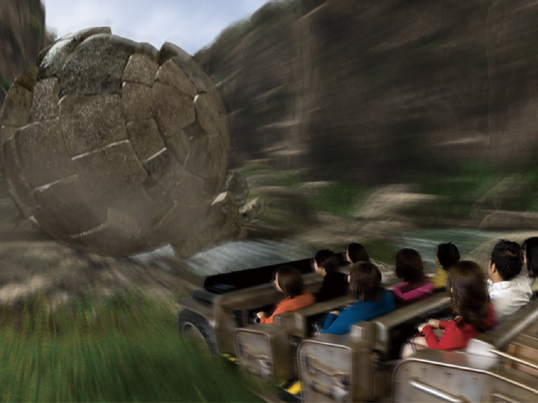
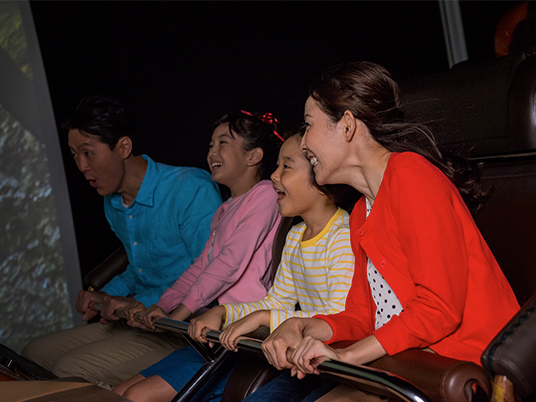
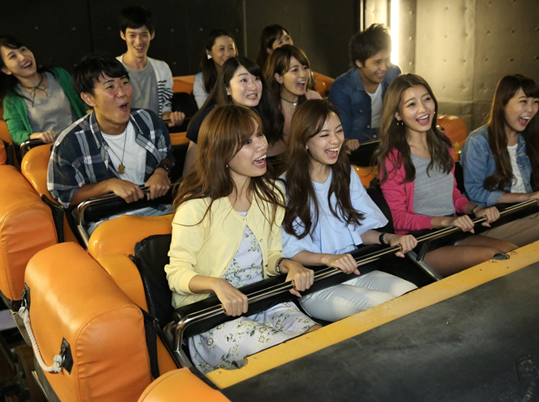
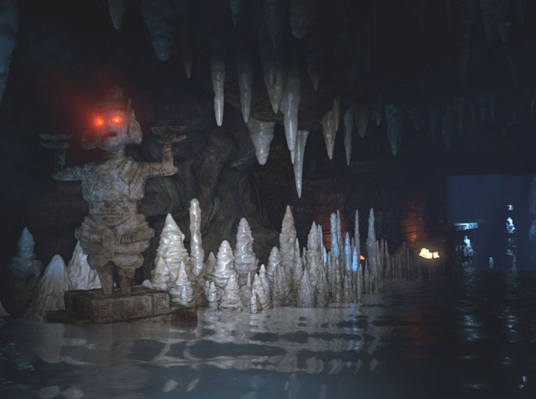
"Virtual" Coasters. Source: Tokyo Joypolis.
As the names may suggest, these rides are all siblings — they fall under the “Wild series” of rides at Tokyo Joypolis. Although they’re all quite similar, I definitely enjoyed them. They’re certainly thrilling and interesting enough for someone like me, who prefers slightly more ambitious rides. But because they don’t involve being upside down, hurtling along at great speed, or otherwise feeling like your guts are being shaken by a skilled bartender, they’re pretty suitable for folks of all experience levels.
The final attraction I tried out is called TOWER TAG VR eSPORTS. For the sake of brevity, I’ll just call it Tower Tag.
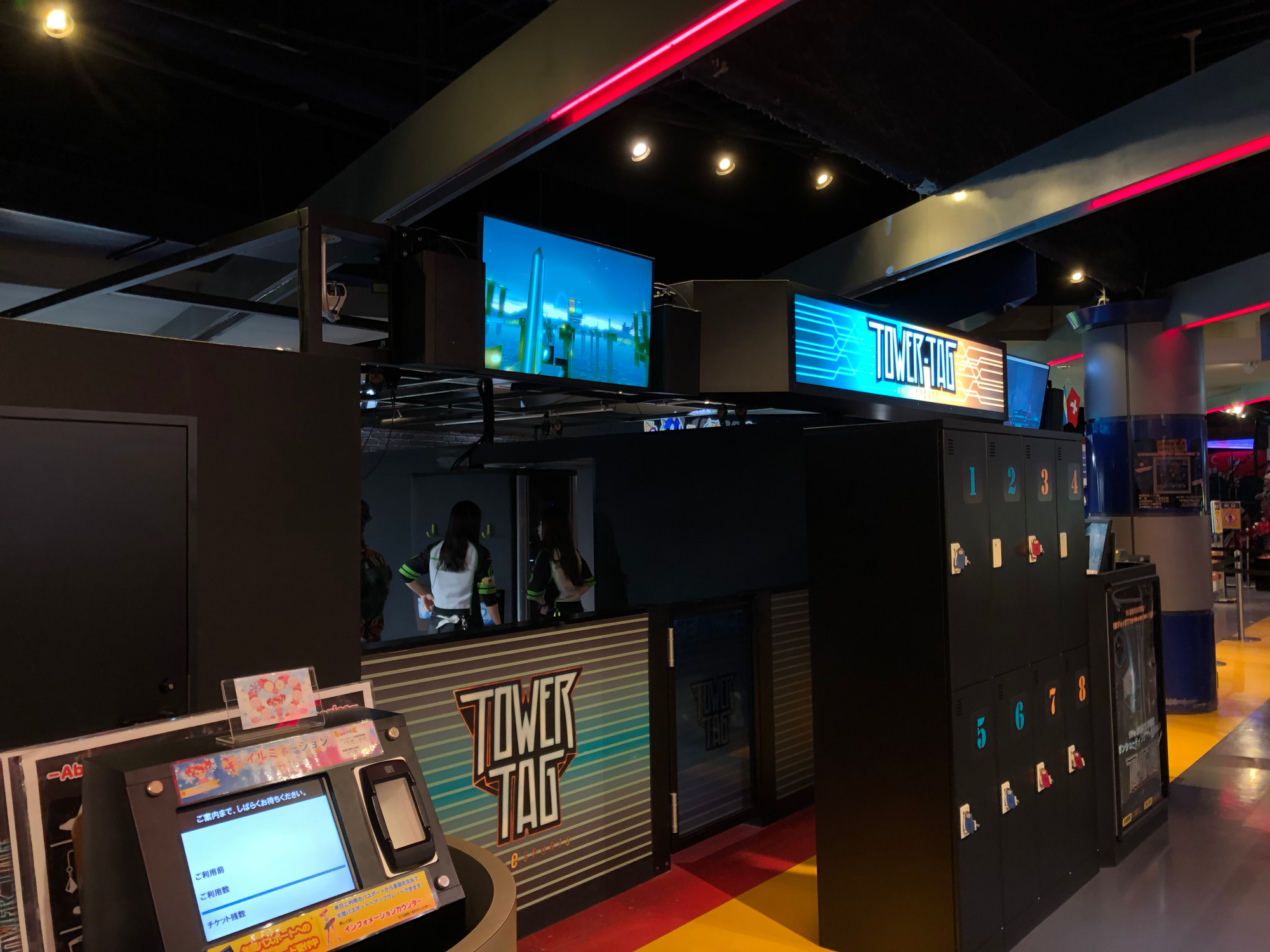
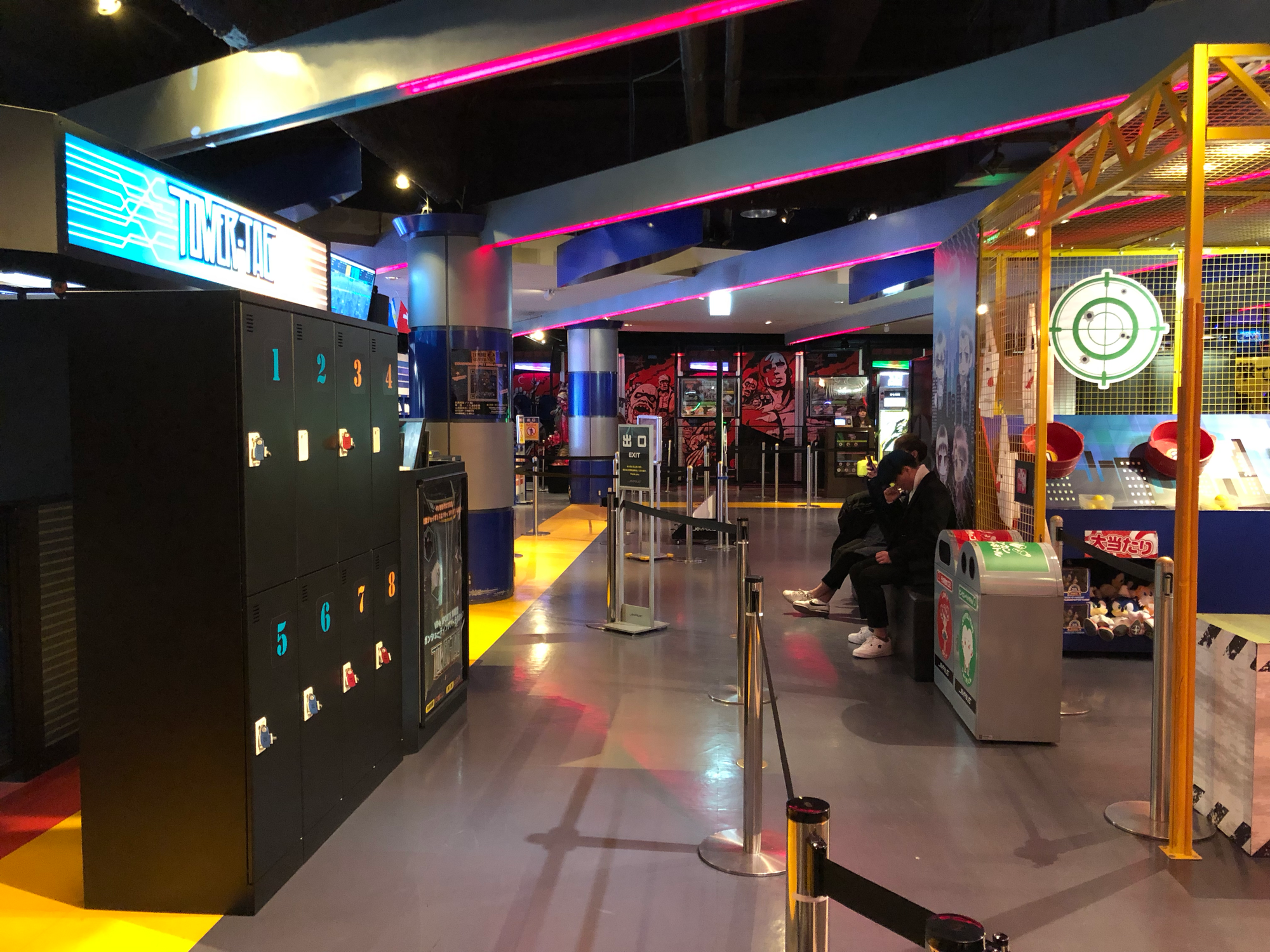
Tower Tag VR eSports. Source: Tokyo Joypolis.
If you’ve played a VR game before, then you’ll have at least some idea of what to expect. Tower Tag involves two teams of two, with team team represented by a different colour. The objective is to “activate” a path of towers from one side of the field to the other — as you activate each tower, it’ll change to your team’s colour. As you progress around the field, you’ll also want to stop the opposing team (in this case, you’ll be taking them down with a gun). The VR headsets are lowered from the ceiling so that you have free range of movement within a limited area. As you might expect, you can use the towers themselves to dodge — and crouch — to avoid gunfire. You can also chat with your teammate through in-game voice. As you activate towers, you can also use your gun to create a kind of neon wire that enables you to leap effortlessly between any of your team’s towers.
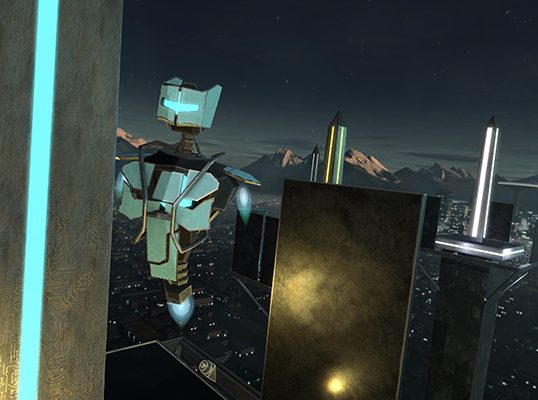
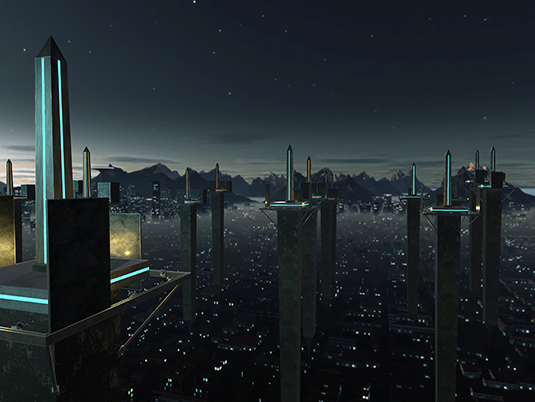
This is roughly what the in-game experience looks like. Source: Tokyo Joypolis.
I must admit, if you’ve played something like Zero Latency (which is also now available at Tokyo Joypolis!) then something like Tower Tag feels a little old-fashioned. I didn’t play Zero Latency at the centre just because I’ve already played it here in Australia, and I wanted to use my time to try new things. But if you haven’t tried Zero Latency — and you’re going to Tokyo Joypolis — you absolutely must try it. It is absolutely the gold standard in terms of full-room-scale VR. There’s simply nothing else like it.
There are many other attractions at Tokyo Joypolis (22 in total, not including the “games” category). As mentioned earlier, experiences like The Joypolis Explorer are great for families and they can be enjoyed at your own pace. There are also some horror-based attractions that I didn’t try, like She’s on her way…SADAKO — The Curse Psychic Manor (yes, that’s its real name — you may want to just refer to it as “The Ring Game”). I get the sense that these types of attractions are definitely aimed at couples, although I’m sure that doesn’t make a difference if you think they’re something you’d enjoy with a group of friends or family.
Odaiba and Tokyo Beach
You could probably spend an entire day at Tokyo Joypolis, depending on what you’re into. If you intend to play all of the games, spend some time doing the exploration attractions, and try out the games at Sonic Carnival — plus get a little shopping and lunch into the mix — then you could certainly spend a full day here. However, that may not be an option for you, or you might be wondering what else there is to see in the area.
It turns out there’s quite a lot going on around Tokyo Joypolis. The amusement park itself is actually situated within a much larger complex called DECKS Tokyo Beach. It’s a multi-use facility that is something like a large department store, with the addition of some other touristy stuff. For example, you’ll find the Legoland Discovery Centre, Madam Tussauds Tokyo, and Tokyo Trick Art Museum all situated right next to Tokyo Joypolis.
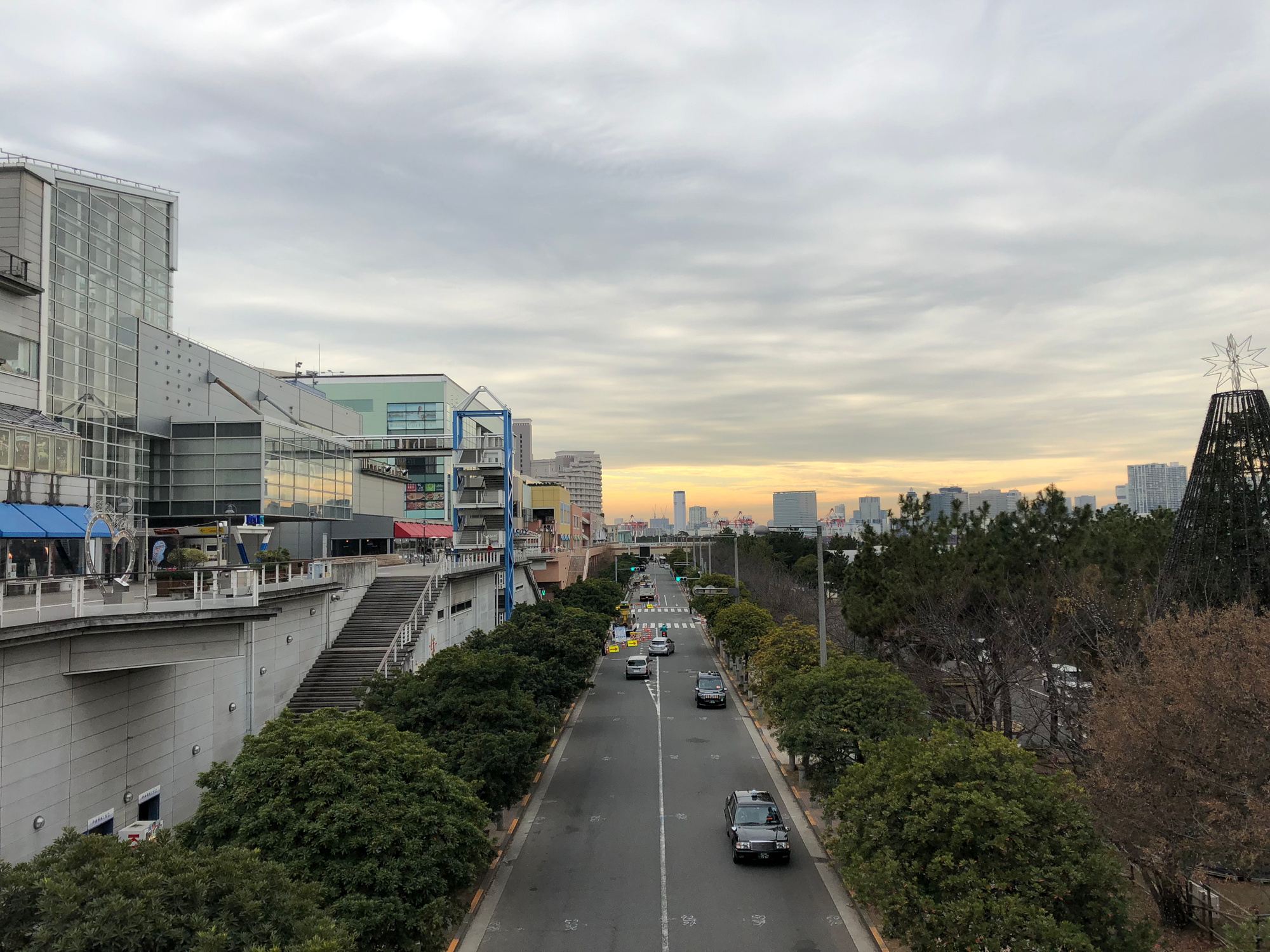
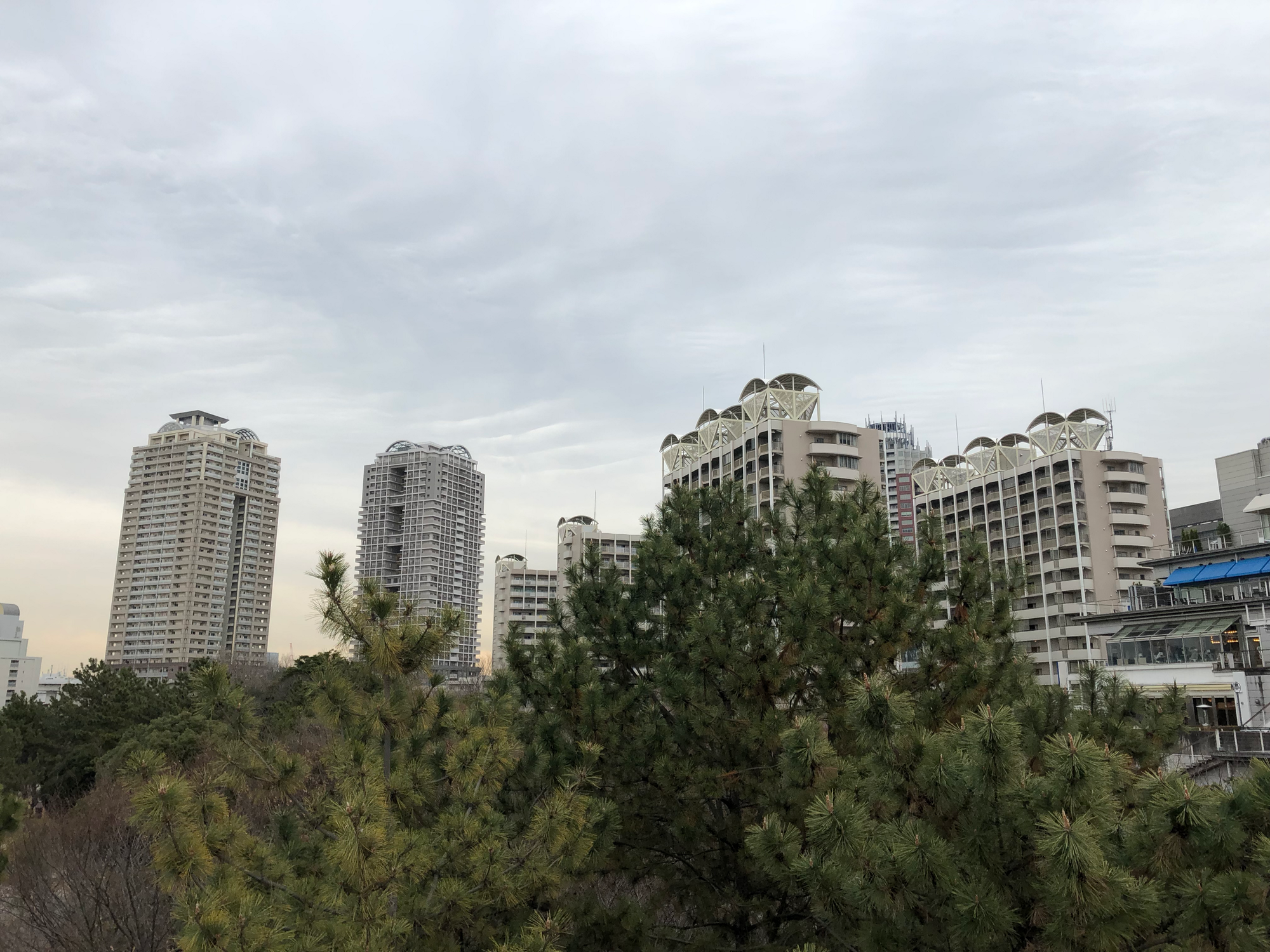
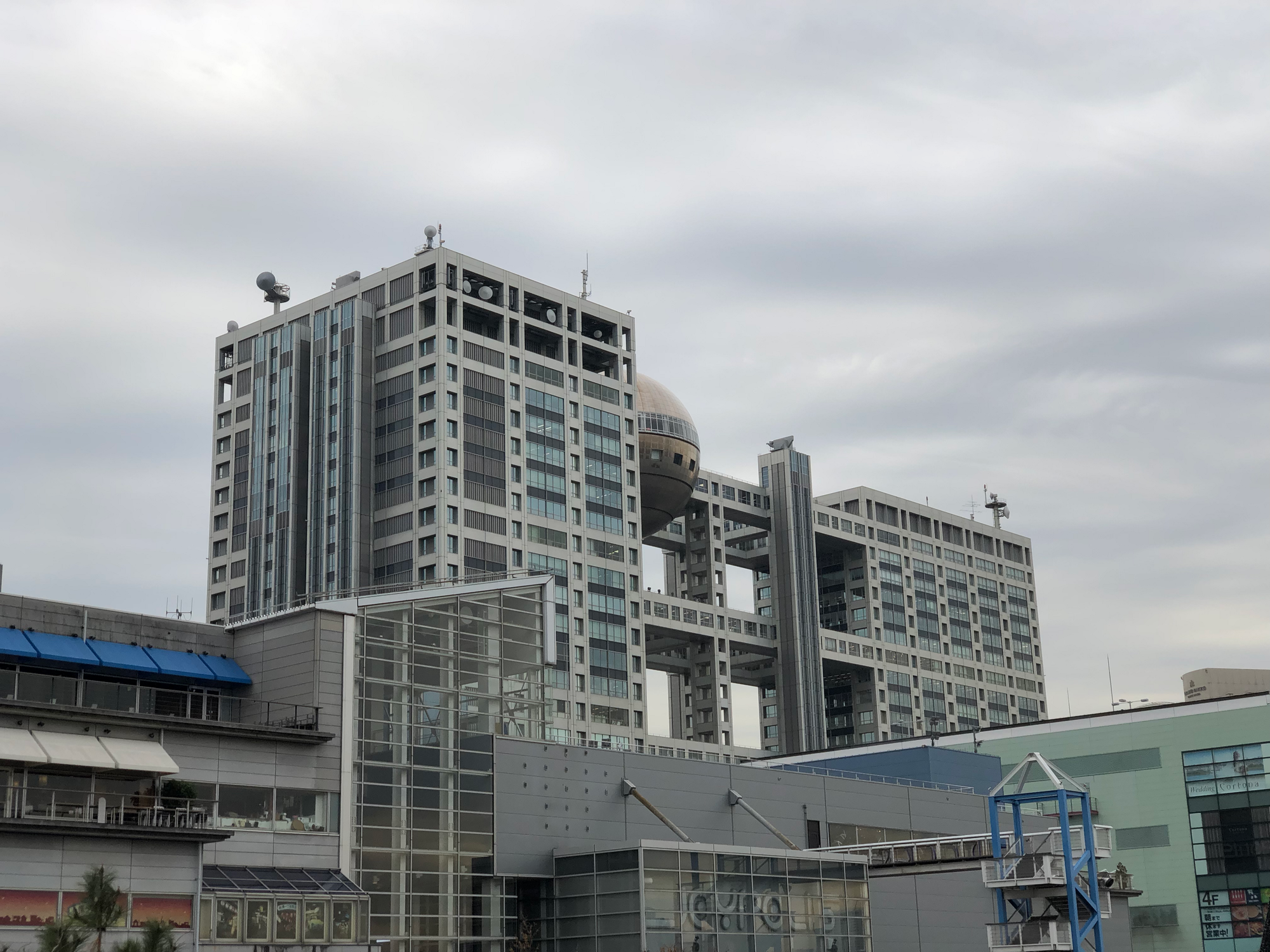
Odaiba region. Source: Author.
In addition to DECKS Tokyo Bay, you’ll find an enormous outlet/retail precinct right nearby called Palette Town Tokyo. Aside from this being a pretty incredible place to pick up some cheap deals (and aside from it looking weirdly identical to the Venetian in Las Vegas/Macau inside), you will find another theme park known as MEGA WEB.
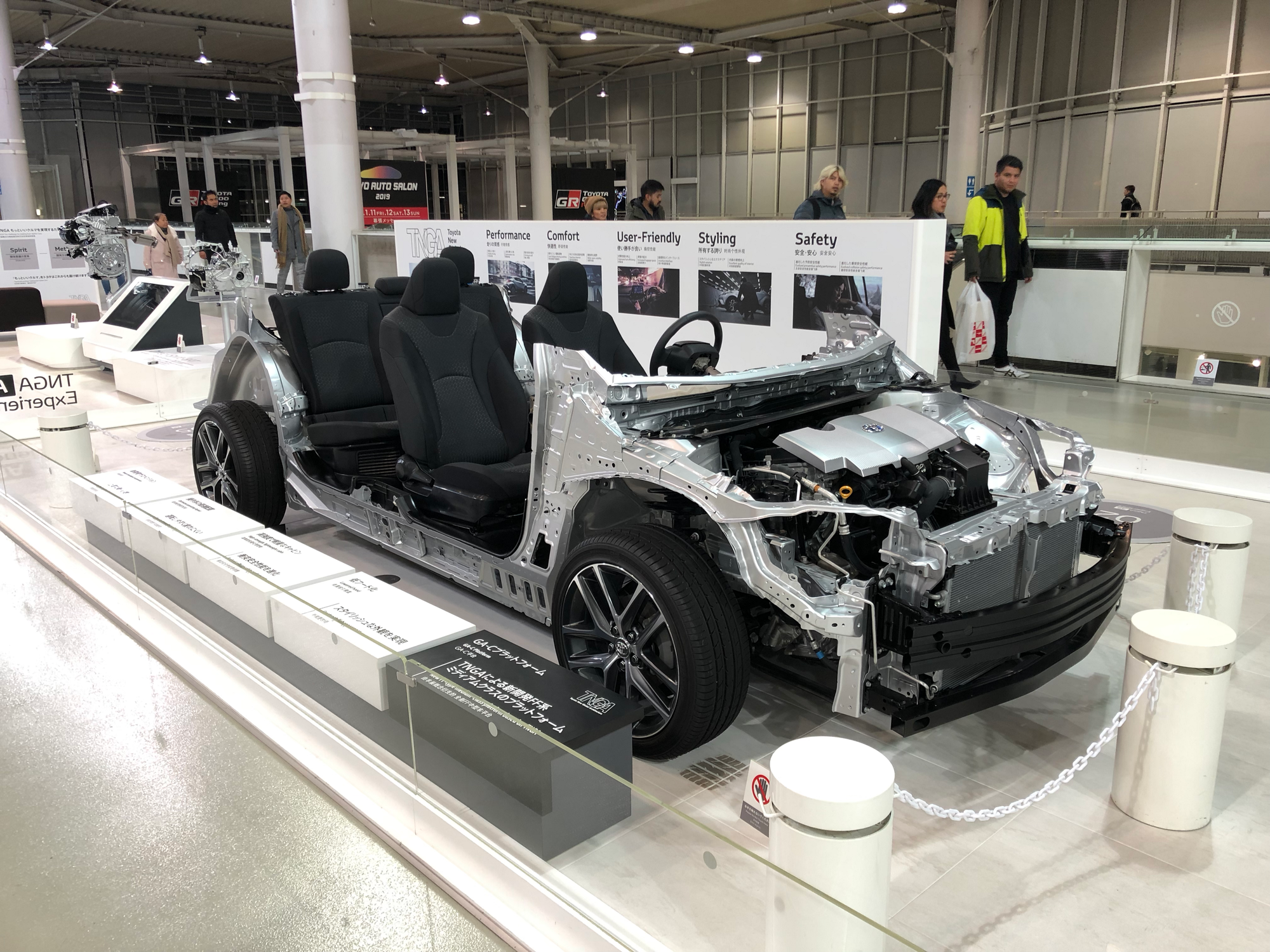
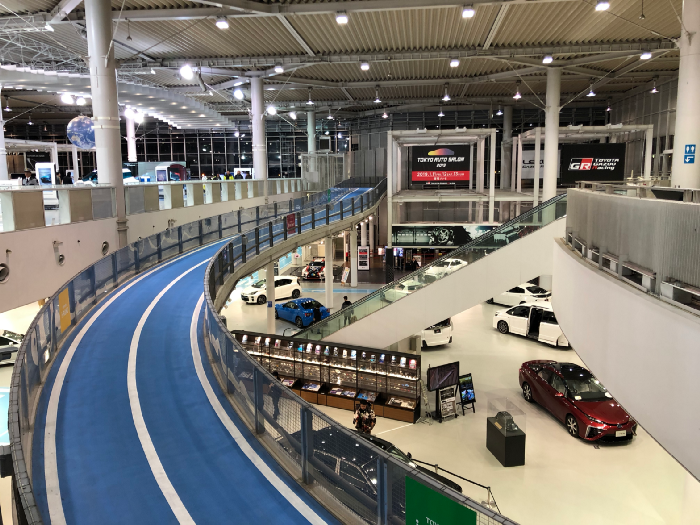
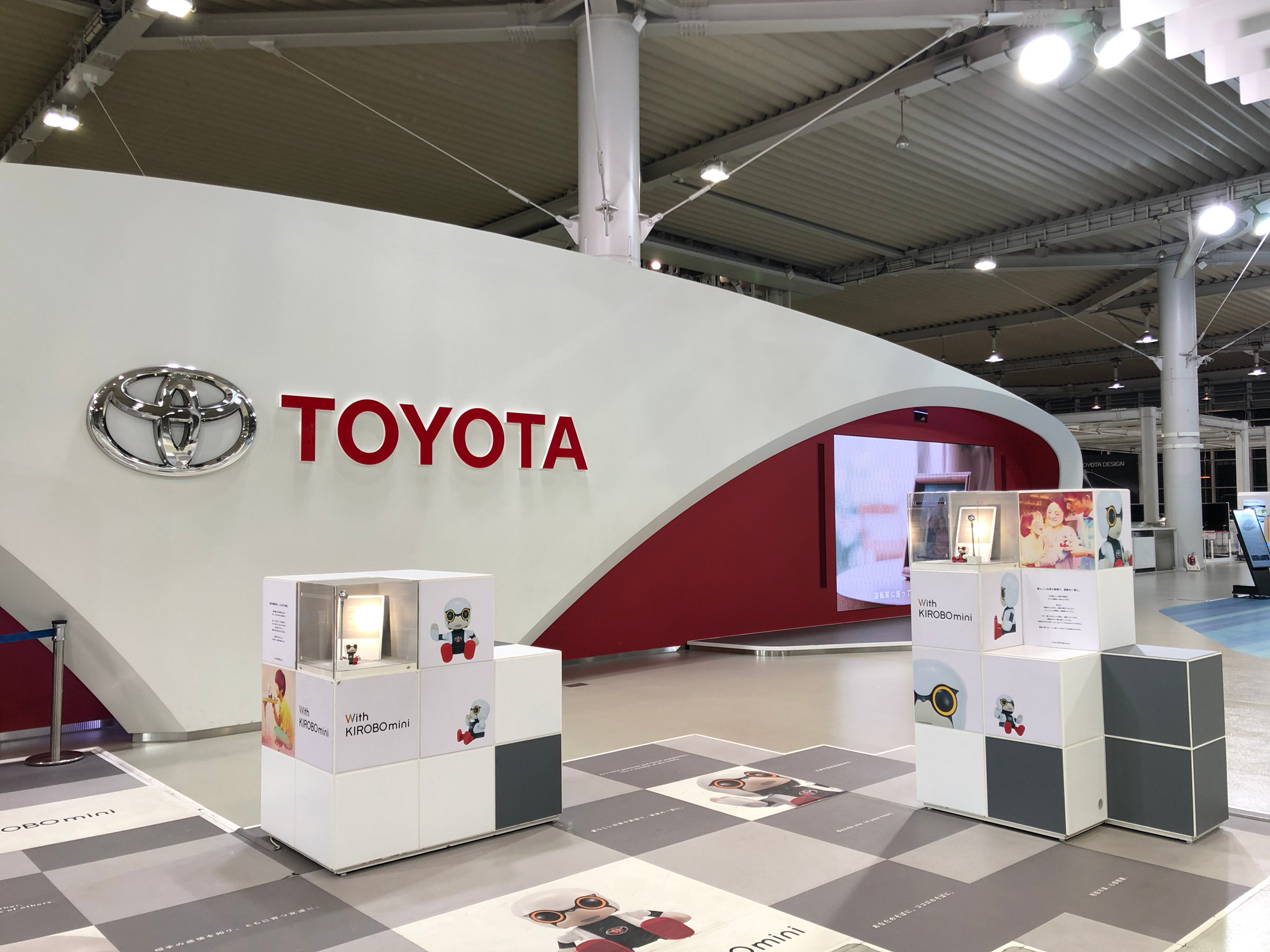
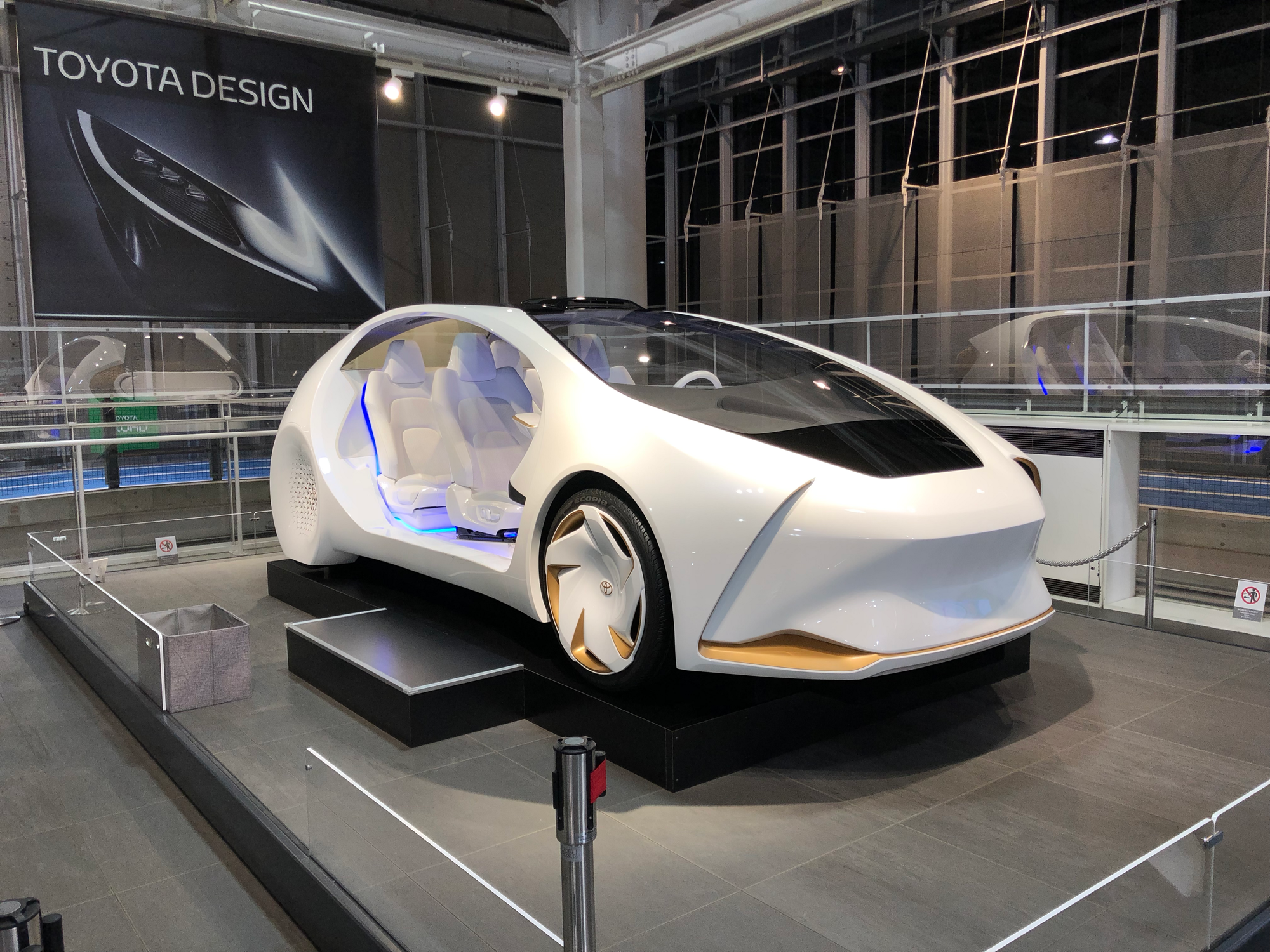
MEGA WEB. Source: Author.
Unfortunately I didn’t get the chance to fully explore this one, as I stumbled upon it after a full day at Tokyo Joypolis. MEGA WEB is entirely a Toyota-based theme park. Within MEGA WEB you’ll find three main areas: History Garage, Toyota City Showcase, and Ride Studio. The showcase area is open until 9pm each night, enabling you to wander around and browse its attractions. If you’re a car enthusiast (as I am), then I definitely encourage you to take a look at this one. When I return to Tokyo, I’ll be sure to pay a visit.
How do I get there, and how much will it cost?
Conveniently, Tokyo Joypolis is open from 10am to 10pm each day (although there are exceptions on specific days — you may want to check out their web site for more specific details).
The easiest way to actually get there is on the train. And given that this is Tokyo, there are a few different options. If you are staying anywhere near the main JR stations in the city (this includes stations on the Yamanote line such as Ikebukuro, Shinjuku, Osaki, Shinagawa, Hamamatsucho, Shimbashi, Tokyo, and Akihabara), you’ll want to jump on the Rinkai line and go to Tokyo Teleport Station. This station is around a five minute walk to Tokyo Joypolis. Be aware that if you’re departing from any of the stations I listed above, you’ll need to change from the Yamanote line to the Rinkai line at a transfer station (I believe you can do this from Osaki, but if in doubt, check the station maps).
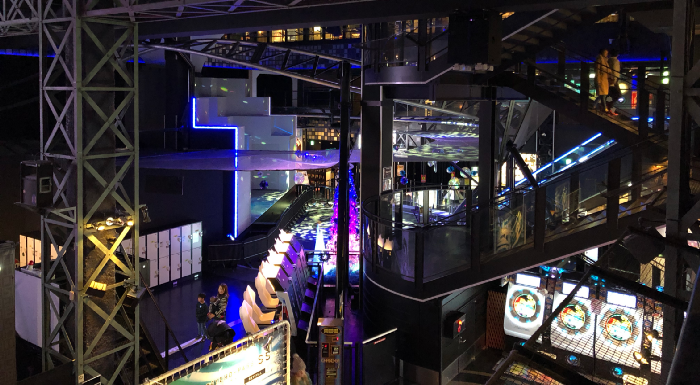
The far more fun way to get to Tokyo Joypolis is via the New Transit Yurikamome. It runs on its own dedicated line called the Yurikamome line and operates between Shimabshi and Toyosu. You can easily get to Shimbashi from any of the stations I listed above, and then transfer to the Yurikamome line. The station you’ll want to stop at to get to Tokyo Joypolis is Odaiba Kaihin Kouen Station (this is about a two minute walk to your destination — even better). What’s truly special about this line is that the train is a completely self-driving/automated vehicle. So, you can sit right at the front or back (as I did) and get a stunning view of Tokyo as the train twists and turns its way past the city’s endless towers via an elevated rail. It’s really wonderful; I highly recommend it.
In terms of pricing, it’s a tricky one, because there are several different options. You can do what I did, and simply pay for an admission ticket when you arrive. This will cost you ¥800 (or about $7.30USD) for an adult and ¥500 (or about $4.50USD) for a child. From there, you have the opportunity to pay separately for each attraction (noting that certain attractions are actually free). Pricing for attractions varies a lot (for example, Transformers Human-Alliance Special will cost you ¥600/$5.40ish USD per person where Zero Latency will set you back ¥2,000/$18ish USD per person). On average, most paid attractions cost ¥600/$5.40sh USD per person (regardless of whether or not you’re paying for an adult or child).
You can also purchase the Advance Passport Ticket for ¥4,100 (adult) or ¥3,200 (child). This gives you access to all attractions except for Zero Latency, and it has a validity period of three months from purchase date. So, that equates to almost $40USD per adult and about $30USD per child. There are some specific conditions associated with buying these tickets, so I definitely recommend checking out the Tokyo Joypolis web site for additional detail.
Okay, but is it worth going?
It’s really tempting to just say “your mileage may vary”, but that feels like a cop out here. If you’re a theme/amusement park fan and you love video games — especially Sega — then I’d say Tokyo Joypolis is an absolute no-brainer. It’s an iconic Tokyo venue that is really worth taking the time to explore. The fact that it’s surrounded by so many interesting things to see and do is a real bonus, and you’ll get beautiful views of Tokyo Bay from here.
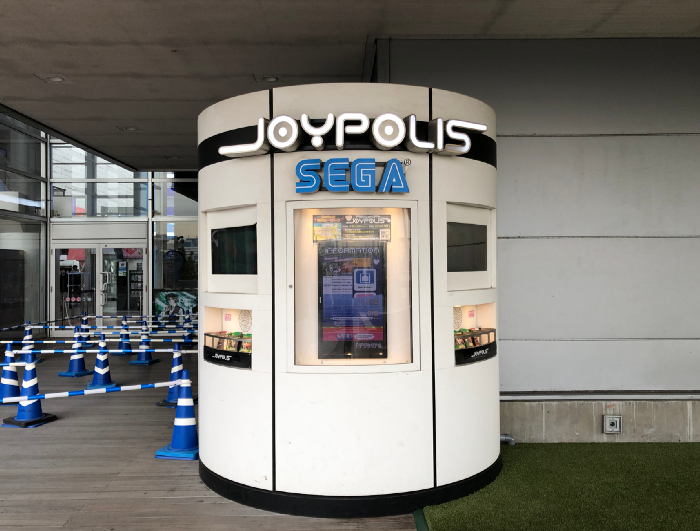
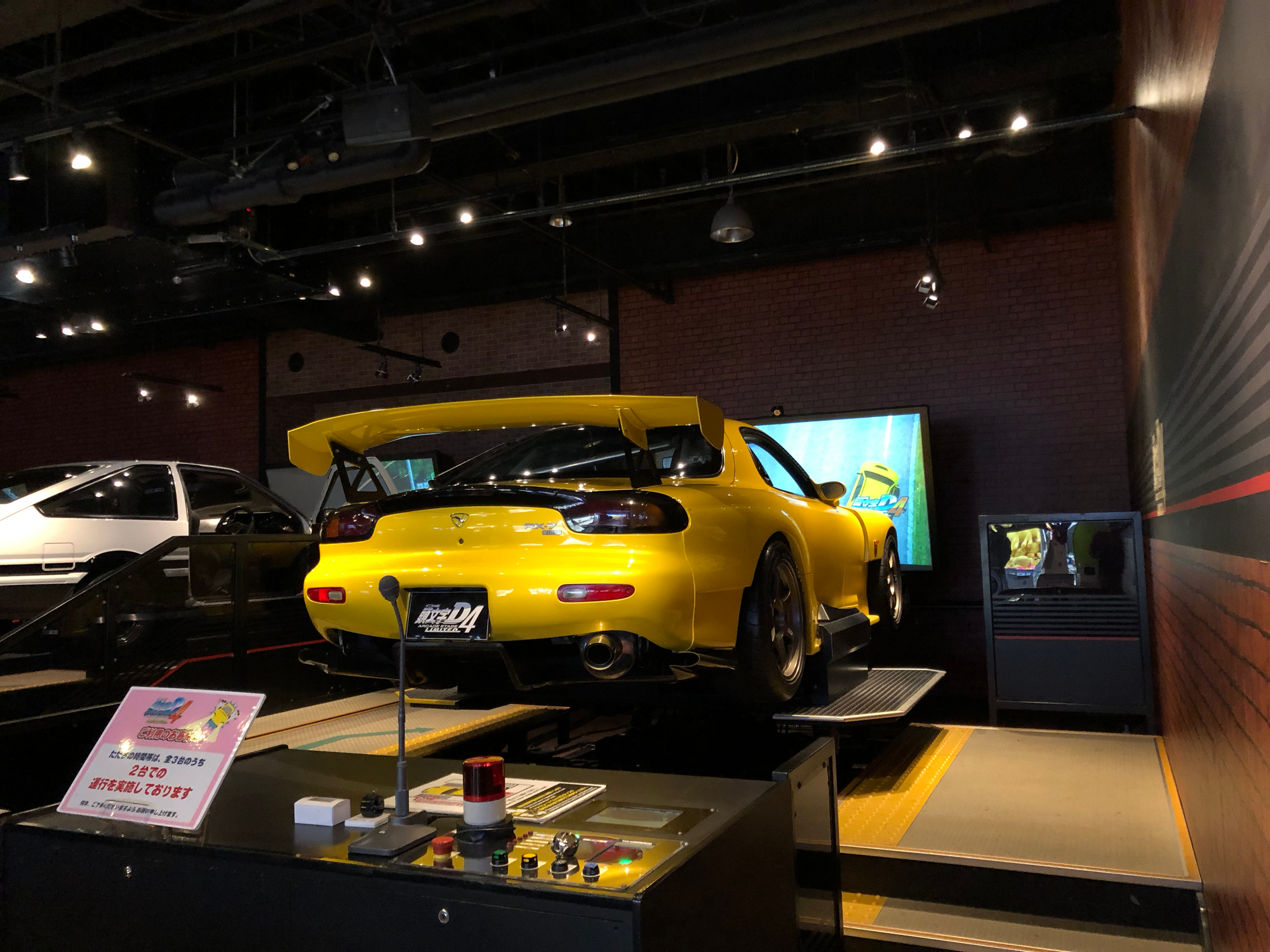
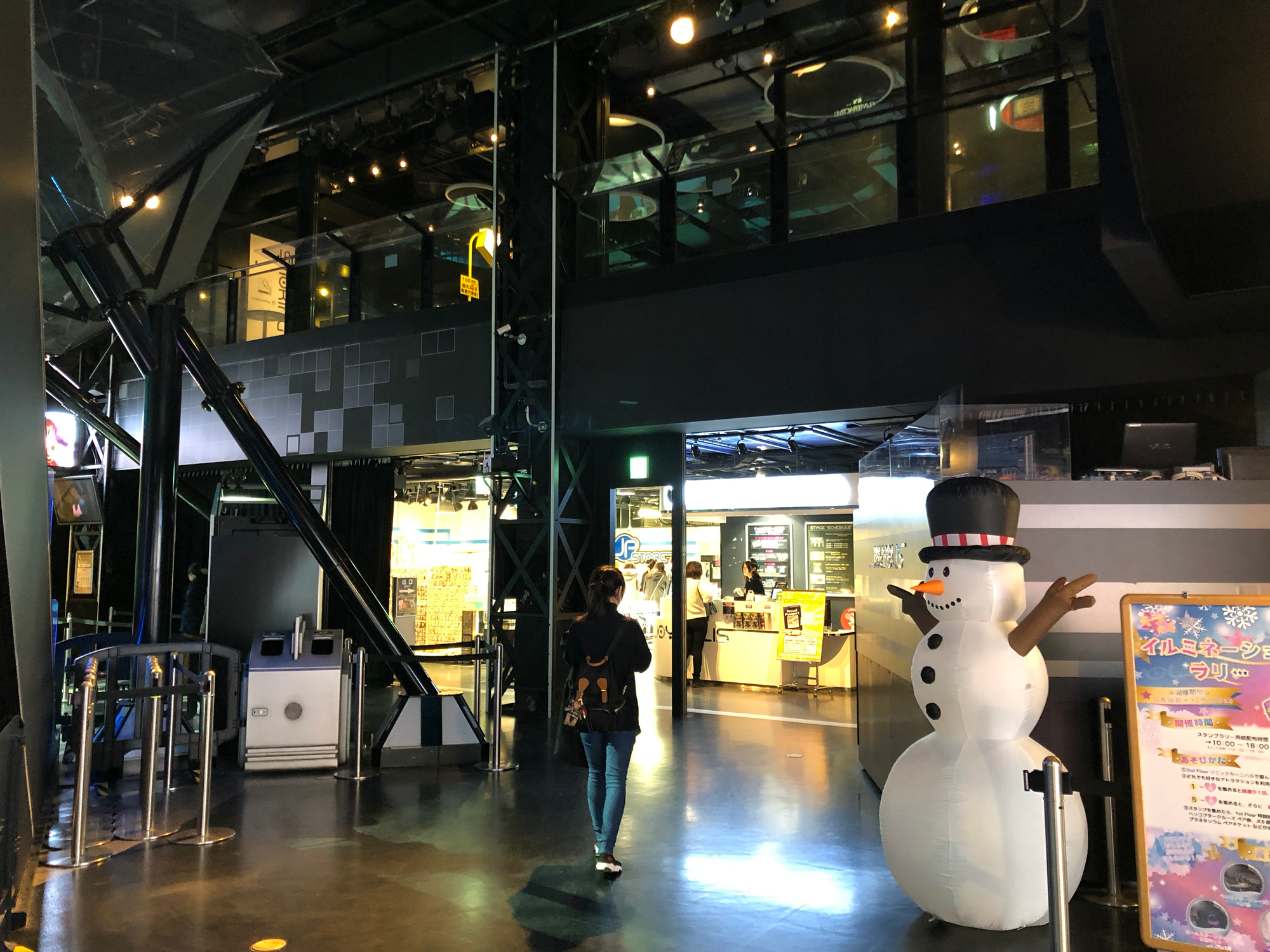
Tokyo Joypolis. Source: Author.
And while I wouldn’t necessarily say that Tokyo Joypolis is cheap, I’d definitely argue that it’s great value, especially compared to some of the other tourist traps around the city. You can go at your own pace, and take the time to enjoy certain activities at your own pace — this is particularly great for families who want to keep children entertained all day for a low cost (and if that’s the case, you may be best advised to buy an Advance Passport Ticket, especially if you want to go on rides/attractions over and over again).
One other thing I noticed — and I can’t speak for how this pans out throughout the entire year — but if you happen to go during the day on a weekday, you’ll find the place relatively sparse in terms of crowds. For the most part, I never had to wait in line for anything for very long — typically I was either waiting for the people ahead of me to finish their ride/game or I was waiting due to safety instructions. So, refreshingly, you actually should have the opportunity to see and do everything you want within a single visit.
I hope you’ve enjoyed this “review” of Tokyo Joypolis. If you have recommendations for other great gaming-based amusement parks that you think fellow travellers might enjoy, please feel free to leave a comment with the details.
